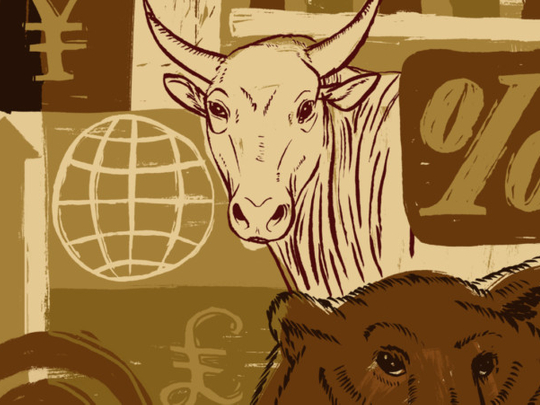
The forex market is undoubtedly the biggest and the most liquid financial market in the world. It is a 24-hour, six-days-a-week affair, involving traders and investors from practically every corner of the world, who, on average, can push the daily transaction value to a whopping $4 trillion (Dh14.7 trillion). And while forex trading has traditionally been a play for institutional investors, more recently it has begun featuring regularly in investment portfolios of high-net-worth individuals.
Risk mitigation is the driver of majority of forex trading in the region, Gary Anderson, the Chief Executive of the Dubai Gold and Commodities Exchange (DGCX) says. The foreign exchange needs are significant and centred on sectors such as oil and gas, trading, tourism and infrastructure. In an environment of high market volatility, businesses are looking to hedge their currency price risk through forex trading, Anderson points out. He believes that the demand for forex trading will continue to rise.
Jakob Beck Thomsen, CEO, Saxo Bank in Dubai, agrees. The contribution of the Middle East to total revenues of Saxo has grown from 3.5 per cent to about 10 per cent, thanks largely to growth in private clientele, Thomsen notes. His business, he says, is now split 50-50 between institutional and high-net-worth investors.
“What we have seen here is what we saw in Europe in the late nineties and the early 2000s,” Thomsen says of the development of forex trading in the broader region. “The development has happened at a much faster pace in the Middle East than what we have seen anywhere else in the world,” he adds.
Forex trading, however, is predominately short term and comes with a high degree of risk, Thomsen warns. However, advancements in technology, especially the advent of sophisticated online trading technologies and evolution of smartphones, have contributed to significant growth in global forex trade, Anderson and Thomsen point out.
And that rate of growth, triggered by technological advancements, is far superior in this region. “We offer mobile phone trading and globally there is an uptake in that. It accounts for approximately 15 per cent of all trades done. But in the Middle East this number is even higher, a clear reflection of the region’s high penetration of smartphones, which is one of the highest in the world,” he explains.
Although the forex trading market in the region is still trailing behind some of the more established global markets, trade in Indian rupee futures — contracts to buy or sell a certain asset at a specified price on a future date — has been very popular since they were introduced back in 2007 by DGCX, Anderson and Gaurav Kashyap, the Head of Futures at Forex brokers Alpari ME, say.
At DGCX, forex trade accounts for a significant part of total volumes. In 2012 it accounted for 93 per cent of total contracts. DGCX forex volumes reached 8.88 million contracts last year, an increase of close to 150 per cent from 2011. In April, DGCX achieved a milestone when its cumulative trading volumes since inception crossed $1 trillion in value, thanks to forex trading. Forex volumes on DGCX totalled 5.8 million contracts at the end of May, a 117 per cent increase from the previous year.
Building on the success of the Indian rupee contracts, DGCX plans to launch more emerging market currency products. “We believe there will be an increasing need for emerging market forex products that facilitate price risk management in these currencies,” Anderson notes.
Although currency futures are on the rise, Thomsen points out that the transactions on the over-the-counter market, which is open 24 hours, account for the vast majority of the forex volume globally and in the region. And he does not see this trend changing.
DGCX is the region’s first derivatives exchange and is still the only one to provide both trading and clearing infrastructure in the region. More recently, DGCX has started getting competition from BFX in Bahrain. Kashyap argues that the competition is healthy as it would create a deeper market and would give the participants alternative solutions and access to a more diverse range of products.











